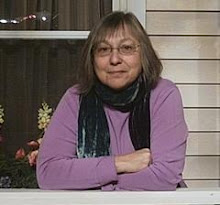
In the 1890's the New York Times called Hancock Street in Bedford-Stuyvesant one of the most attractive residential spots in Brooklyn and so it was and still is. The street is lined with three and four-story homes built for prominent citizens in an array of styles from Queen Anne brick and terracotta structures to a High Renaissance mansion. The original inhabitants, while people of wealth and achievement, were not immune to personal hardships and tragedy.
One of the simplest homes on the street is a brownstone located at 176 Hancock Street, whose owner, Augustus Van Wyck, was one of the first residents on the block. While not an elaborate house, it did have a extensive judicial library. Van Wyck was the 7th generation descendant of Cornelius Van Wyck, who arrived in New York from Holland in 1650. Augustus Van Wyck ran for governor against Teddy Roosevelt and was narrowly defeated. Like Teddy Roosevelt, he married
 a southern belle who was a member of the Daughters of the Confederacy.
a southern belle who was a member of the Daughters of the Confederacy.At 247 Hancock is a 60 foot-wide mansion, the Queen of Hancock Street. It was designed in the High Renaissance style by the architect Montrose W. Morris and is an emblem of this community of prestige and wealth. Today, it is still a one-family home. It was built for John C. Kelly, w
 ho was a leader in the powerful Reform Democrats of Brooklyn. Kelly was born in Ireland and made his fortune manufacturing water meters in Williamsburg, Brooklyn. In 1895 he was appointed by President Cleveland to be the Collector of Internal Revenue. Kelly also served as President of the Board of Education.
ho was a leader in the powerful Reform Democrats of Brooklyn. Kelly was born in Ireland and made his fortune manufacturing water meters in Williamsburg, Brooklyn. In 1895 he was appointed by President Cleveland to be the Collector of Internal Revenue. Kelly also served as President of the Board of Education. At 258 Hancock Street, tragedy struck when the mother, Mrs. Emily Salmon and her daughter, Mrs. Tooker, were out riding in their horse and buggy along Eastern Parkway. The horse was spooked and bolted into the Plaza at Prospect Park. The carriage overturned, killing Mrs. Salmon, while Mrs. Tooker escaped with only a broken ankle. It is interesting to note that, according to The New York Times, both were excellent drivers.
At 258 Hancock Street, tragedy struck when the mother, Mrs. Emily Salmon and her daughter, Mrs. Tooker, were out riding in their horse and buggy along Eastern Parkway. The horse was spooked and bolted into the Plaza at Prospect Park. The carriage overturned, killing Mrs. Salmon, while Mrs. Tooker escaped with only a broken ankle. It is interesting to note that, according to The New York Times, both were excellent drivers.318 Hancock Street has not fared well. The building and its immediate neighbors are, today, in notable disrepair. Ironically, the original inhabitants of this simple brow
 nstone building did not fare well, either. The building was the scene of violence and scandal when in July of 1901 Mr. Albert C. Latimer was killed and the grand jury debated the details of the crime. According to the New York Times, Mrs. Latimer maintained that a burglar shot her husband. However, Mr. Latimer claimed on his deathbed that he knew the gunman, and a private detective testified before the grand jury to having been hired by Mr. Latimer to do surveillance at the home of one Mr. Tuthill, whom Mr. Latimer suspected of having a liaison with his wife. The decision of the grand jury was that the killer was unknown.
nstone building did not fare well, either. The building was the scene of violence and scandal when in July of 1901 Mr. Albert C. Latimer was killed and the grand jury debated the details of the crime. According to the New York Times, Mrs. Latimer maintained that a burglar shot her husband. However, Mr. Latimer claimed on his deathbed that he knew the gunman, and a private detective testified before the grand jury to having been hired by Mr. Latimer to do surveillance at the home of one Mr. Tuthill, whom Mr. Latimer suspected of having a liaison with his wife. The decision of the grand jury was that the killer was unknown.Hancock Street, itself, remains the beautiful place it was originally. The grandeur of the architecture is largely intact and reflects the sense of pride and strength of the original and current inhabitants.



